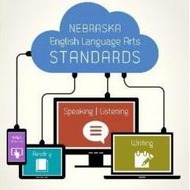
(View Complete Item Description)
In this module, students explore the issue of working conditions, both historical and modern day. As they read and discuss both literary and informational text, students analyze how people, settings, and events interact in a text and how an author develops a central claim. Students strengthen their ability to discuss specific passages from a text with a partner, write extended text-based argument and informational pieces, and conduct a short research project. At the end of the module, students will have a better understanding of how working conditions affect workers and the role that workers, the government, consumers, and businesses play in improving working conditions. The first unit focuses on Lyddie, a novel that tells the story of a young girl who goes to work in the Lowell mills, and explores the issue of working conditions in industrializing America. This unit builds students’ background knowledge about working conditions and how they affect workers, and centers on the standard RL.7.3, which is about how plot, character, and setting interact in literature. As an end of unit assessment, students write an argument essay about Lyddie’s choices regarding her participation in the protest over working conditions. The second unit moves to more recent history and considers the role that workers, the government, and consumers all play in improving working conditions. The central text in Unit 2 is a speech by César Chávez, in which he explains how the United Farm Workers empowered farmworkers. Unit 2 focuses on reading informational text, and students practice identifying central ideas in a text, analyzing how an author develops his claims, and identifying how the sections of the text combine to build those ideas. This unit intentionally builds on Odell Education’s work, and if teachers have already used the Chávez speech and lessons, an alternate text is suggested with which to teach the same informational text standards. In the End of Unit 2 Assessment, students apply their understanding of text structure to a new speech. Unit 3 focuses on the research standards (W.7.7 and W.7.8): through an investigation of working conditions in the modern day garment industry, students explore how businesses can affect working conditions, both positively and negatively. As a final performance task, students create a consumer’s guide to working conditions in the garment industry. This teenage consumer’s guide provides an overview of working conditions and offers advice to consumers who are interested in working conditions in the garment industry.
Find the rest of the EngageNY ELA resources at https://archive.org/details/engageny-ela-archive .
Material Type:
Module




















